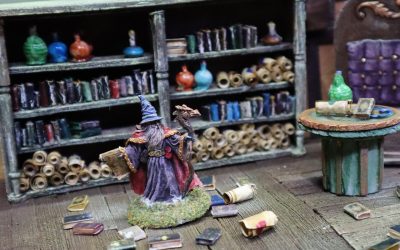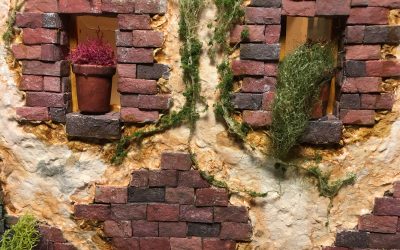Miniature painting is an art form that combines precision and creativity, allowing enthusiasts to breathe life into small-scale worlds. If you’re new to the world of miniature painting, fear not; this article is your guide to brushing up on essential techniques and discovering tricks that will set you on a path to crafting stunning miniature masterpieces.
Choosing the Right Brushes
Before you start painting, ensure you have a good selection of brushes. Fine detail brushes, dry brushes, and wash brushes are essential tools in your miniature painting kit. Investing in high-quality brushes will make a noticeable difference in your work.
Priming and Basecoating
A solid foundation is key to achieving vibrant colors and smooth textures. Begin by priming your miniature with a primer suitable for miniatures. Once dry, apply a basecoat of the main color to each area you plan to paint. This ensures that subsequent layers of paint adhere well.
Layering and Highlights
Miniature painting often involves layering to achieve depth and dimension. Start with the darkest colors and work your way to lighter shades. Thin your paints with water or a medium to achieve smoother transitions between colors. When highlighting, focus on the raised areas of the miniature to create contrast and make details pop.
Dry Brushing for Texture
Dry brushing is a technique that adds texture to surfaces. Dip a dry brush into paint, remove most of it on a paper towel, and lightly brush it over the raised areas of the miniature. This technique accentuates details like worn edges and fur textures.
Washes for Depth
Washes are diluted, translucent paints that settle into the crevices of your miniature, adding depth and shadows. Apply a wash over the entire model or selectively in areas where you want to create shadows.
Blending for Smooth Transitions
Blending is an advanced technique that involves smoothly transitioning between colors. It requires practice and patience but results in stunning gradients and realistic effects. Start by experimenting with wet blending, two-brush blending, and layer blending to find the method that works best for you.
Detailing and Fine Lines
Fine lines and intricate details can be challenging, but with a steady hand and the right brushes, they become more manageable. Use a fine detail brush and practice control to add intricate patterns, symbols, or tiny features.
Sealing and Protecting
Once you’re satisfied with your painting, seal your miniature with a matte or gloss varnish to protect your work and provide a finish that suits your desired look. Varnishing also helps preserve the colors and prevent chipping.
Practice and Patience
Remember that miniature painting is an art that improves with practice. Don’t be discouraged by initial challenges. Embrace each project as a learning opportunity and enjoy the journey of mastering this captivating craft.
In conclusion, miniature painting is a rewarding and creative hobby that allows you to bring tiny worlds to life. By mastering these essential techniques and experimenting with your own style, you’ll soon find yourself painting miniature wonders that capture the imagination of all who behold them. So, pick up your brushes, embark on your painting journey, and watch as your miniatures come to life with each stroke of color.


